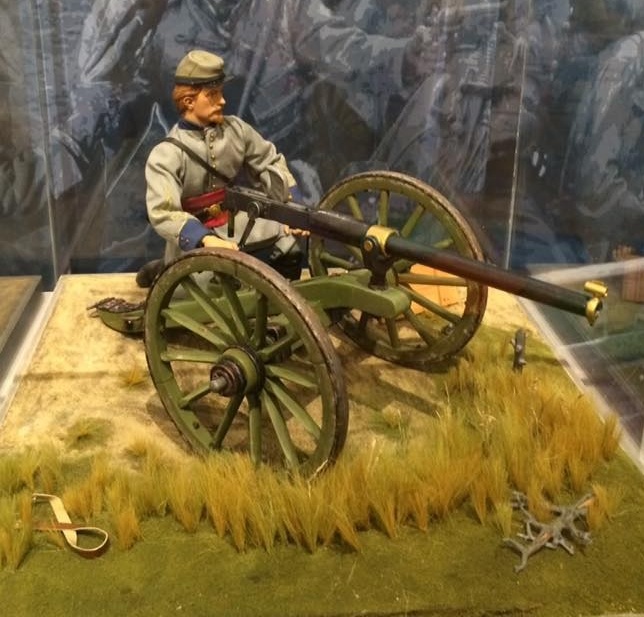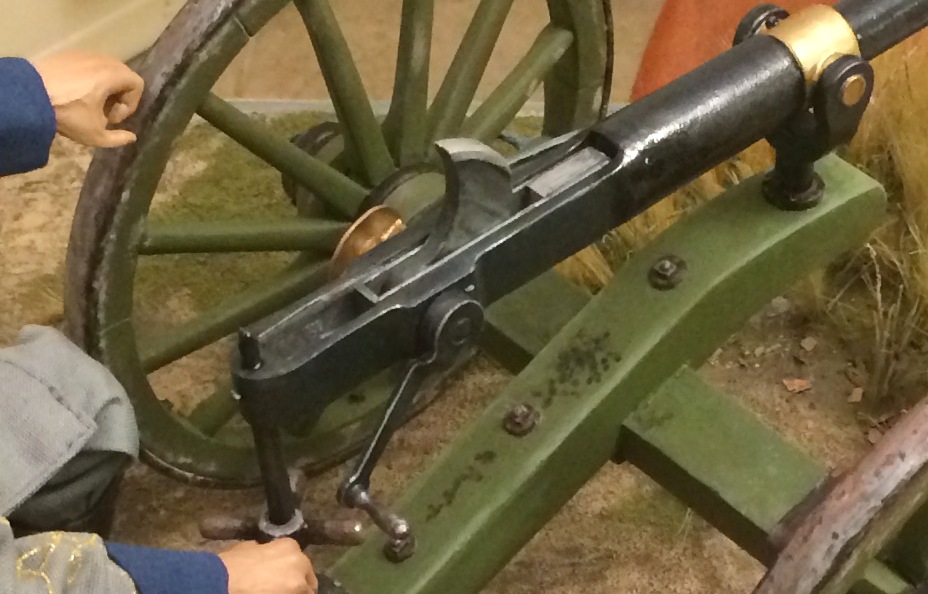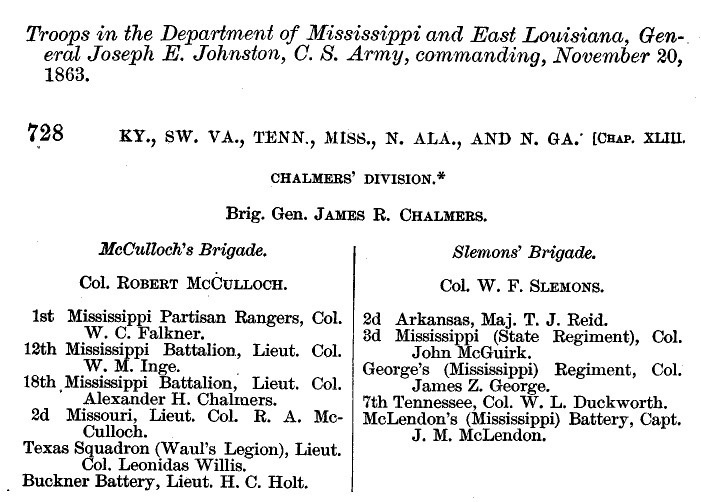|
BUCKNER BATTERY
A Light Mississippi Artillery Buckner
Battery was a small unit attached to General Chalmers' cavalry
division. Other than the brief description provided by Rowland's
history,
the battery has no unit history and no roster. The following
article was compiled based upon Official Records, NARA military service
records and other resources. |
| Williams Gun |
Buckner Battery consisted of four(4) unusal breech-loading, smoothbore cannons called the Williams Gun. Captain David R. Williams, CSA, of Covington, Kentucky designed the gun. Only 42 Williams Gun cannon were produced during the war. They were produced at three foundries: F. B. Deane Jr. & Son, Lynchburg, Virginia, Tredegar Iron Works, Richmond, Virginia, and Skates & Co, Mobile, Alabama.
The gun was loaded by hand as the crank opened and closed the
breech-block. The crank rotated a large cam that moved the breech
block forward and aft. The crank rotated rotated a worm gear on
the left side of
the breech that operated a spring-loaded hammer, releasing the
hammer when the handle was in the aft position.
Range: 800 yards effective and 2000 yards max
Rate of Fire: 25 rounds per minute
Caliber: 1.5625 inch smoothbore
Ignition: percussion cap
Ammo: solid round ball, Shot No. 10.
The designer's son, R. S. Williams, was authorized to
organize an artillery company equipped with Williams Guns for
operational tests.
Adjutant and Inspector Generals Office, Special Order No. 11,
dated Richmond Jany 14, 1863. 
One Williams Gun was captured in Kentucky. This gun was part of a battery under General Humphrey Marshall stationed near Ivyton, KY. On March 20, 1863, Captain Reuben Patrick of the 14th Kentucky Infantry (Union) crept into the Union camp, detached the 150-pound gun from its carriage, and carried it into the woods and hid it. He returned after the Confederates had left and retrieved the cannon. The cannon was subsequently stored at the arsenal at Frankfort for 30 years. This example remained in the Veteran's family until it was donated to the Kentucky Military History Museum.
A photo was taken of this cannon during an 1894 reunion(below). It may be the only photo of the Williams Gun shown mounted on a carriage, even though it is obviously a post-war version. The 1894 photos whows a carriage with 48-inch steel whieels. There is one main beam mounted on the axle and the gun is mounted on a pintel mount at the end of this beam. The cannon was not secured by "cheek pieces" as typical with most field guns.
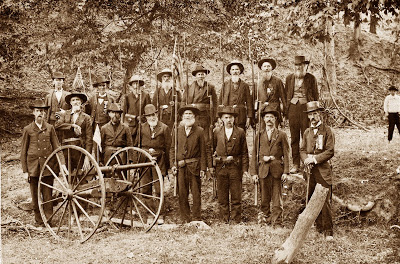
Example of a Williams Gun at the West Point Museum
.
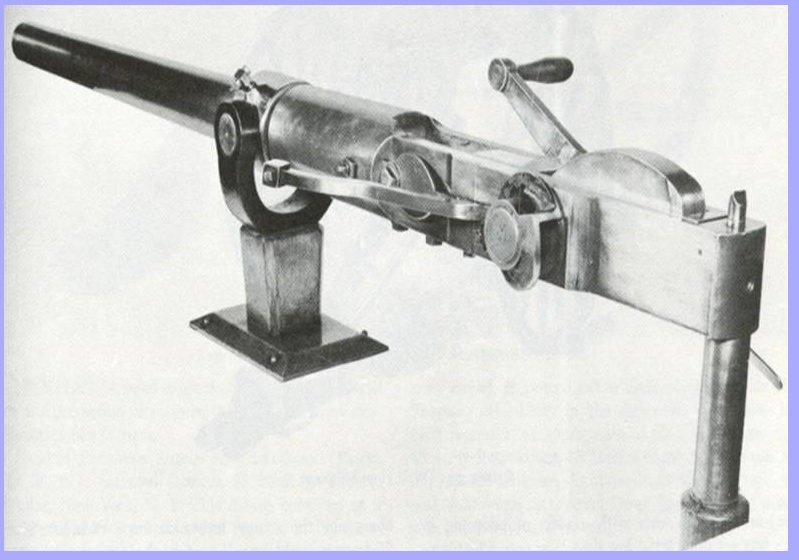
Note the gun is mounted on a pintel mount.
Front sight is missing.
The museum has since closed and they do not know where the Army moved this gun.
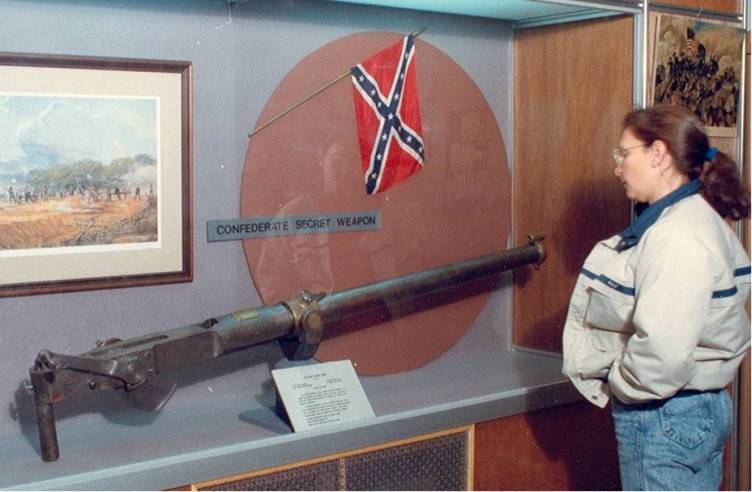
This gun is the most complete example to survive the war.
It has all the sights and moving parts. Note the trunnion collar and front sight are brass.
Photo from website of Watervliet Army Arsenal Museum's old webpage.
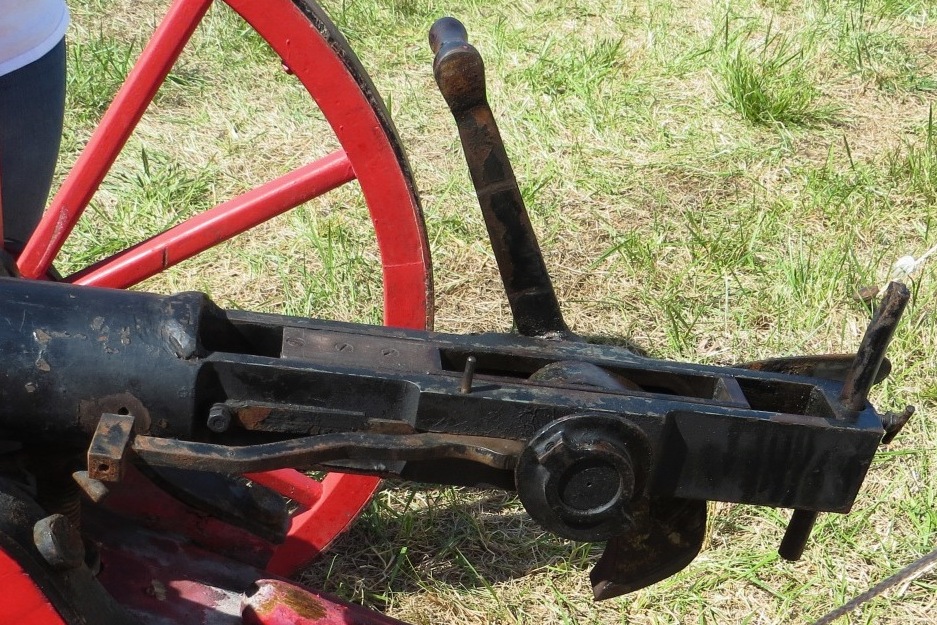
Cannon Ball dug at Collierville, TN

Four(4) examples were dug at the site of 11 October battle.
Ball measures approximately 1.5 inches diameter.
Size is too large for a cannister load from a field gun.
| Lieut. Henry C. Holt |
Henry Clay Holt was born on February 6, 1841, in Rowesville, Orangeburg, South Carolina, and was the son of Dr. Archibald M. Holt, a physician. His family moved to Manchester, Bedford County(now Coffee County), TN, prior to the war. On September 15, 1858, Henry Holt entered the US Naval Academy. When the war began, he was in his thrid year and the academy released him to enter service. Henry Holt returned to Tennessee and became a Midshipman in the CS Navy serving on CSS Jackson. He participated in the naval battle Head of Passes outside New Orleans. He also fought in the first gunboat battle on the Mississippi River at the Battle of Lucas Bend, on January 11, 1862.
After the CS Navy loss most of their ships, Midshipman Henry Holt resigned and joined the privateer organization, the Confederate River Defense Fleet. He served on the flag ship, CSS Little Rebel. At the Battle of Memphis on 6 June 1862, the CSS Little Rebel was grounded. The Confederate River Defense Fleet was disssolved.
Henry Holt was commisioned a Lieutenant in the CS Army at Camp Moore,Tangipahoa, Louisiana, with the duty of Drill Master. He was given a special duty as liasion between Army General Daniel Ruggles and CSN Captain Isaac Brown, commanding the ironclad CSS Arkansas. Later he was assigned as Post Adjutant (or P.A.C.S.A.) at Camp Moore. He was commended for aiding in the attack on Baton Rouge on 5 August 1862. It is unclear how he actaully fought in the battle or if he provided supplies from Camp Moore.
While still performing the duty of Post Adjutant, he also began
to lead Buckner Battery. Eventually, he was transferred to
Brigadier-General James R. Chalmers as the official commander of the
battery. While with Chalmers' cavalry division, Lt. Holt saw
action in North Mississippi and participated in the October 1863 raid
on Collierville,
TN. In January 1864, Lt. Holt and Buckner Battery were
transferred to Lieut-General Leonidus Polk's Army of the West.
The Official Records continued to reference Lt. H. C. Holt and the Williams
Gun but there is no futher mention of Lt. Holt after February
1864.
Note: there was a Lt. Holt serving in General Nathan B. Forrest's Staff but this is not the same person.
The Official Records of the war includes a few activities of Buckner Battery. In the service records of Lt. Holt, there are requisition forms for forage for 28 horses/mules which is also stated in Rowland's history of the unit. This would mean the size of the battery was no more than 28 men. Since the William Gun could be operated by only 3 men or less, and the battery contained 4 Williams Gun and one 3-inch Ordnance gun and probably a supply wagon, the congregant of 28 men and horses would be sufficient to move and operate this small battery in the field.
Lt. Holt issued a report on the Battle of Collierville where he describes the deployment of the battery. The reports by other commanders described Buckner Battery as being used at New Albany and Wyatt. At Collierville, it is said a section of the battery was advanced by hand with the attacking dismounted cavarly. By the time they retreated back to Wyatt, Buckner Battery was low on ammunition and only 2 guns were used to hold off the Union troops to allow the remainder of their forces to escape across the Tallahatchie River. Even though Lt. Holt's report describes the action, he does not mention the type of cannon he operated nor the caliber or number of rounds he fired.
An order in December 1863, required Lt. Holt to return the men who were on loan from General Ferguson's command. The service records of three of the names mentioned in Rowland's history identified them as members of the 56th Alabama Partisan Rangers who were detached for special service to Buckner Battery. This is why there is no roster for this unit as Buckner Battery was composed of men on detached served from other regiments.
After the war, Henry married Catherine A. Puckett and settled in Tullahoma and set-up a law business. In 1868, Henry got into an argument with another lawyer, James D. Aydelot. On August 8, 1868 Henry Holt called Aydelot to come out into the streets of Tullahoma. Henry drew a derringer pistol which misfired and Aydelot shot and killed him. He was buried on Sunday, August 9, 1868, in Oakwood Cemetery in Tullahoma, Coffee County, along with other members of his family. He was survived by his widow and daughter. James Aydelot would become mayor of Tullahoma many years later.
Before the war, two of Henry's brothers moved to Arkansas. One brother was George William Moreau Holt,
also a physician like his father. He began service as
a doctor in the war but was promoted to Brigadier General of the
Arkansas’s state militia. On July 25, 1864, he was pursued and
killed by Pvt. George Lucas of the 3rd Missouri Cavalry (US) who was
awarded a Medal of Honor for his action. General George
Holt was the only general of state militia to be killed in combat
during the war.
Brief Bio of Midshipman H. C. Holt, CSN & CRDF
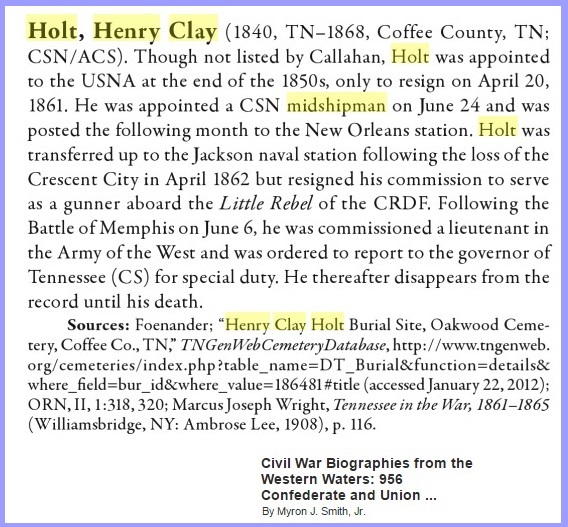
Sources:
"Military History of Mississippi; 1803-1898” by Dunbar Rowland. New edition with supplement by H. Grady Howell, Jr. Chickasaw Bayou Press, 2003.
NARA Military Service Records for Lt. H. C. Holt filed under Officers & Staff and three(3) members of the 56th Alabama Partisan Rangers.
1860 Federal Census for states of Tennessee and Maryland.
US Naval Academy Student Records for Midshipman Henry C. Holt for Years 1859, 1860, 1861.
Drawing sketches of a Williams Gun cannon provided by Watervliet Army Arsenal Museum, NY.
Material from the US Army Ordnance Museum.
Article from "The Artilleryman" magazine by Lyle Hegsted.
Example of a Williams Gun cannon at the Kentucky History Museum, Franklin, KY.
Newspapers reporting the death of Henry C. Holt.
Memphis Daily dated August 14, 1868
Public Ledger, Vol VI, No. 139, dated August 13, 1868.
Republican Banner, dated August (?) 1868.
"Coming Like Hell!: The Story Of The 12th Tennessee Cavalry", by Waldon Loving, Writers Press Club, 2002.
Blog "Eastern Kentucky and the Civil War". Includes 1894 Reunion photo with a William Gun cannon and the story of its capture.
Link: http://eakycivilwar.blogspot.com/2012_05_01_archive.html
Scale Model of William Gun
Model built to 1:6 scale using drawing and dimensions provided by the shop machinist at Watervalet Army Arsenal Museum before it was closed. Model has working crank, cam and breech block. The model depicts the gun mounted on a pintel mount attached to a single beam which is mounted on scaled 36-inch wheels. Model was on temporary display at Morton Museum in Collierville, TN.
